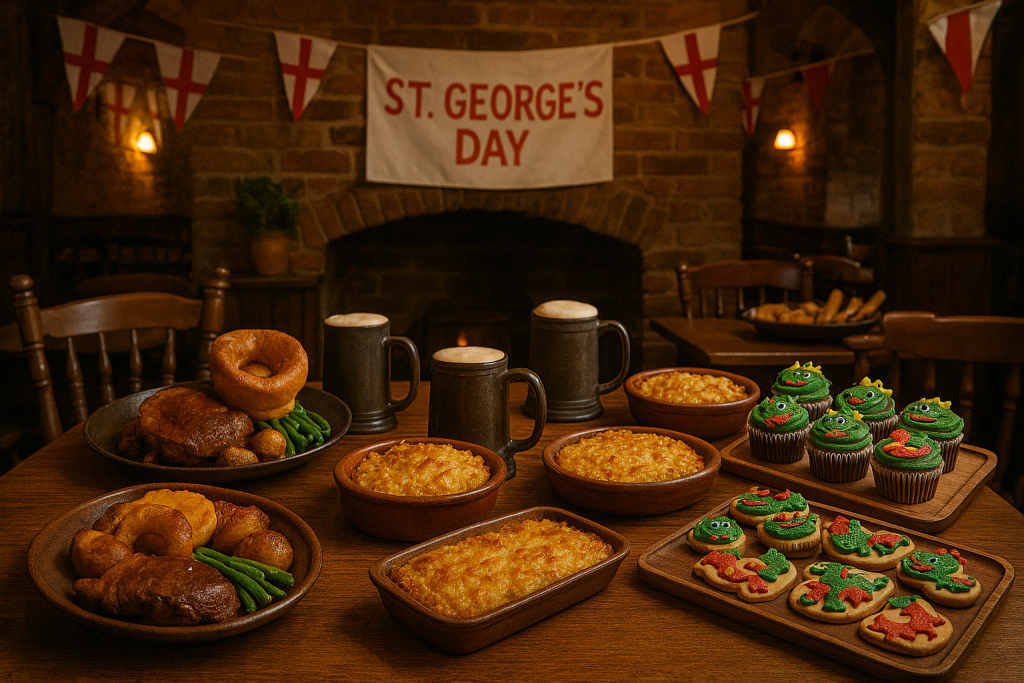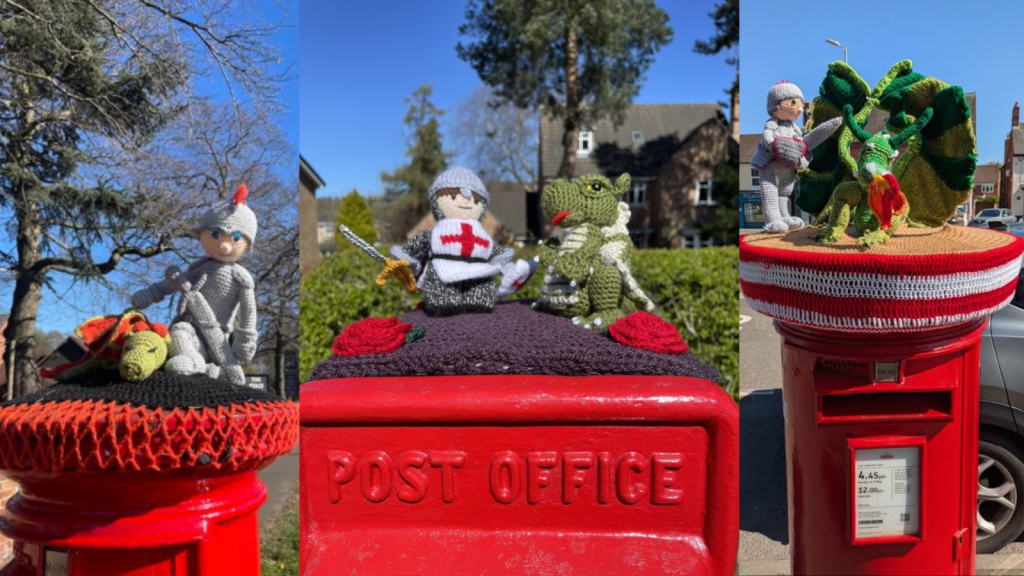
St George’s Day, celebrated annually on April 23, is England’s national day, honouring the patron saint, St George. This vibrant occasion blends rich history, legendary tales, and lively traditions, offering countless ways to join the festivities. From dragon-slaying myths to modern celebrations, St George’s Day in England is a time to embrace English heritage with pride. In this article, we’ll explore the history of St George’s Day, its cherished traditions, and exciting activities you can enjoy to make the most of this special day.
St George, England’s patron saint, is a figure shrouded in both history and legend. Born around AD 270 in Cappadocia (modern-day Türkiye), he was likely a Roman soldier who rose to prominence as a member of Emperor Diocletian’s Praetorian Guard. A devout Christian, George was martyred in AD 303 in Lydda (now Israel) for refusing to renounce his faith during Diocletian’s persecutions. Contrary to popular imagery, he wasn’t a knight in shining armour but an officer who stood firm in his beliefs, earning him sainthood in AD 494 by Pope Gelasius.
Although St George never set foot in England, his reputation for virtue spread across Europe, and by the 9th century, his feast day, April 23, was celebrated in England. Following the Battle of Agincourt in 1415, St George’s Day became one of England’s most significant feast days, rivalling Christmas in importance.
The most famous tale associated with St George’s Day in England is the legend of St George slaying a dragon. According to the story, George rode into Silene (modern-day Libya), where a dragon terrorised the town, demanding human sacrifices. George heroically defeated the beast, saving a princess and converting the town to Christianity. While this tale, popularised in the Middle Ages through The Golden Legend, is a myth that emerged centuries after George’s death, it symbolises the triumph of good over evil.

This iconic story has cemented St George’s image as a heroic figure, with his red cross on a white background—St George’s Cross—becoming England’s national flag and part of the Union Jack.
St George’s Day in England has evolved over centuries, blending medieval customs with modern celebrations. While it’s no longer a public holiday, efforts since the 1894 founding of the Royal Society of St George have revived its cultural significance. Here are some beloved traditions:
The St George’s Cross flag is a proud symbol of St George’s Day in England. You’ll see it waving at parades, pubs, and sporting events. Fans of English football, rugby, and cricket often sport the flag or paint it on their faces during international matches, celebrating national pride. Historically, English knights wore the cross during the Crusades, and it remains a unifying emblem today.
Feasting is a hallmark of St George’s Day celebrations. Traditional English dishes like roast beef with Yorkshire pudding, shepherd’s pie, fish and chips, or cottage pie grace tables at home and in pubs. Some even host feasts inspired by medieval banquets, complete with hearty fare and ale. For a sweet touch, bake dragon-themed cupcakes or biscuits to honour the legendary tale.

A lesser-known custom is wearing a red rose in one’s lapel, tied to the myth that St George gave a rose to the princess he saved. Though not as common today, it’s a charming way to nod to the day’s romanticised history. Blue was said to be St. George’s favourite colour (there is no way to verify if this is true, but a nice!), so it is now custom to wear blue to major events, services and celebrations as well as wearing a red rose on your lapel.
Traditional English folk activities like Morris dancing and Pace Egg plays often mark St George’s Day. Morris dancers, adorned with bells and colourful ribbons, perform lively routines in town squares, while mummer plays re-enact St George’s heroic deeds, delighting audiences with their blend of humour and drama.
Cadet forces from the Navy, Army and RAF, and the Police, parade through central London on Saturday 26 April, culminating in the laying of wreaths at the Cenotaph to commemorate ‘The Fallen’ of past conflicts, to salute those who have served or are currently serving in our Forces, and to demonstrate loyalty to Nation, Kingdom and Commonwealth. The parade is an annual event organised by The Royal Society of St George — ‘the premier patriotic society of England’ founded in 1894.

Whether you’re in a bustling city or a quaint village, St George’s Day in England offers endless ways to join the fun. Here are engaging activities to make your celebration memorable:
Major cities like London host vibrant St George’s Day festivals. Trafalgar Square often transforms into a hub of live music, food stalls, and family-friendly activities. Expect performances from Morris dancers, folk bands, and even speed painters creating St George-inspired art.
Check local councils or websites like St. George Events for parades, church services, or village fetes near you.
Embrace the dragon-slaying legend with creative crafts. English Heritage offers a downloadable dragon pattern for kids to make their own “cuddly” dragon, perfect for a rainy day. Adults and children alike can craft cardboard swords and shields or dragon masks for playful battles at home. Share your creations on social media with hashtags like #StGeorgesDay to connect with others celebrating, to spread the St George’s Day spirit.

Visit historic sites linked to St George, like St George’s Chapel at Windsor Castle, built for the Order of the Garter, which honours the saint. Many English Heritage properties host St George’s Day events, from medieval re-enactments to storytelling sessions about his life and legends. Visiting castles or cathedrals is a fantastic way to immerse yourself in England’s heritage.
Throw a themed party with friends and family. Decorate with St George’s Cross bunting, serve traditional English foods, and play iconic British tunes from The Beatles to Adele. Add a quiz about St George’s history, traditions or a dragon-themed scavenger hunt for kids. For adults, toast with English ales or ciders to celebrate in true pub style.
St George’s Day in England is also a time for community spirit. Many towns organise charity runs, bake sales, or clean-up projects tied to the day. Participating not only honours St George’s legacy of courage but also strengthens local bonds. Look for events on platforms like X, Eventbrite or local Facebook groups.

St George’s Day in England is more than a nod to a distant saint—it’s a celebration of identity, community, and resilience. In a globalised world, it offers a moment to reflect on English culture, from its literary giants like Shakespeare to its culinary staples like scones and tea. Whether you’re waving a flag, savouring a pie, or dancing in a village square, St George’s Day invites everyone to join in, regardless of background.
“Ready to celebrate St George’s Day in England? Share your plans or memories online to inspire others, and let’s make April 23rd a day to remember!”

Read more articles here: https://tupatriots.org/news-articles
© The Uncensored Patriots - 2025. All rights reserved. Web design and maintenance by Consiliuma. Articles by TUP Community Members.